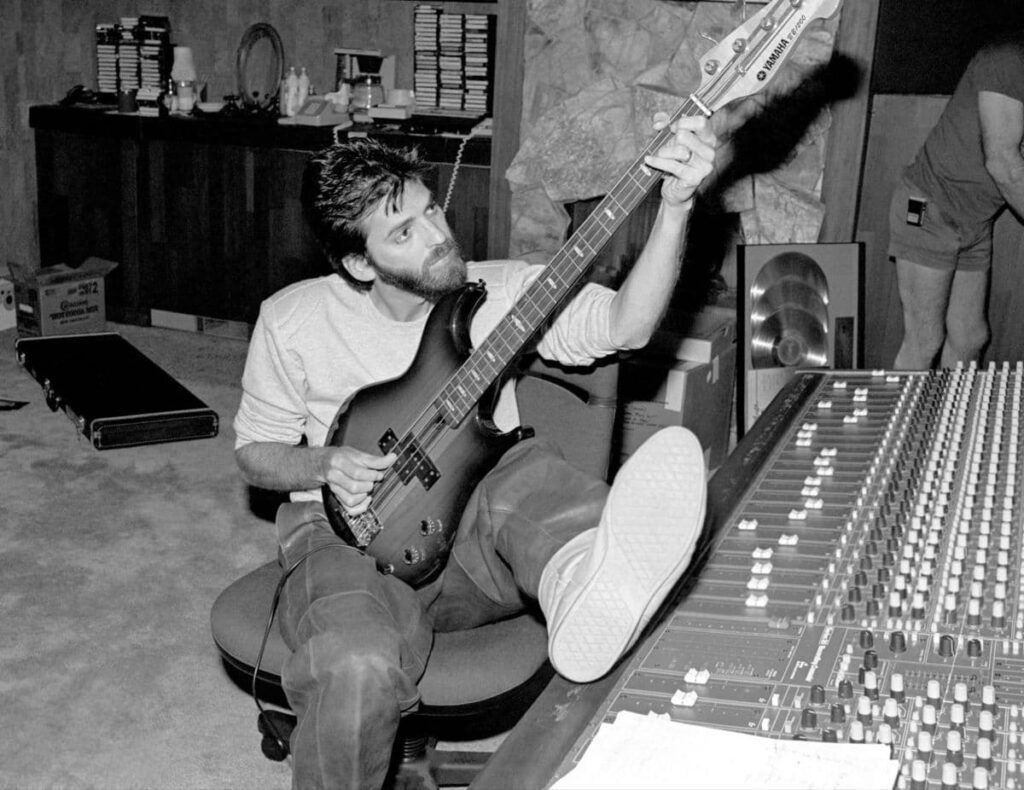
The Roar of the 80s: How a Soundtrack Song Became the Ultimate Anthem of High-Octane Thrill
An adrenaline-fueled ode to pushing limits and embracing the thrilling risk of living life on the edge.
It was April 24, 1986, a time when shoulder pads were high, hair was big, and the blockbuster film soundtrack was king. Into this vibrant, synth-driven landscape roared “Danger Zone,” a hard rock single by the legendary Kenny Loggins. Pulled from the massive Top Gun soundtrack—an album that became the best-selling soundtrack of the year and one of the best-selling of all time—the song quickly soared up the charts, validating Loggins’ title as “The King of the Movie Soundtrack.”
The impact of “Danger Zone” was immediate and immense. In the United States, it peaked spectacularly at Number 2 on the US Billboard Hot 100 in July 1986, held from the top spot only by Peter Gabriel’s “Sledgehammer.” This was a substantial chart triumph, marking the second-highest charting hit of Kenny Loggins’ entire career, right behind his 1984 chart-topper “Footloose.” Beyond the US, the song found global success, hitting Number 6 in Switzerland and Number 7 in Canada. Every time that opening electric guitar riff—backed by a distinctive Yamaha DX7 synthesizer bass line—blasted from a radio or MTV, it instantly transported us back to the flight deck of an aircraft carrier, a visceral, unmistakable piece of mid-’80s pop culture that still electrifies listeners decades later.
The Unexpected Journey to the Cockpit
The story behind how Kenny Loggins came to record “Danger Zone” is almost as thrilling as a high-G turn in an F-14 Tomcat. It was a classic Hollywood scramble, a tale of fortunate drop-outs that ultimately landed the track with the perfect voice. Film producers Jerry Bruckheimer and Don Simpson, along with music supervisor Michael Dilbeck, initially sifted through over 300 songs for the opening sequence of Top Gun, but none captured the visceral energy they needed. Finally, they commissioned disco and electronic music pioneer Giorgio Moroder to write something specifically for the carrier deck scenes.
Moroder, with lyrics penned by Tom Whitlock, crafted the hard-rocking track and recorded a demo. The search for a singer, however, proved difficult. Several major acts passed on the opportunity: Jefferson Starship was reportedly the first act offered, but they withdrew. Corey Hart declined, preferring to sing his own compositions. Even the band Toto was slated to perform the track but had to pull out due to legal conflicts with the film’s producers. Kevin Cronin of REO Speedwagon also turned it down, jokingly citing the notes as “too high” for him.
It was only at the “eleventh hour” that the film’s producers approached Kenny Loggins, who was already in the studio recording another song for the movie, “Playing with the Boys.” Loggins would later recall that his assent was a “very snap judgement.” He quickly recorded the song, adding a few of his own improvisations, channeling an aggressive, almost Tina Turner-like rock vocal delivery to match the song’s intensity. He was not the first choice, but his powerful, soaring voice cemented “Danger Zone” as an undeniable classic, proving that sometimes, the best partnerships are the unexpected ones.
The Thrill of the Red Line Overload
Lyrically, “Danger Zone” is a relentless invitation to confront the limits of control and explore the intoxicating freedom found on the very edge of risk. The lyrics, with their overt aviation allusions—”Revvin’ up your engine,” “shovin’ into overdrive,” “Headin’ into twilight”—perfectly mirror the film’s narrative of daring, skill, and living without a safety net.
The core meaning, however, extends far beyond the cockpit of a fighter jet. It’s a metaphor for self-discovery and pushing one’s personal boundaries. Lines like: “You’ll never know what you can do / Until you get in up as high as you can go” suggest that true potential and self-acquaintance are only achieved when one willingly enters the figurative “Danger Zone”—a place of high stakes and high adrenaline. It evokes that nostalgic, youthful feeling of invincibility, urging the listener to embrace the thrill of the chase and the intensity of life lived on the “red line overload.” For us older readers, it’s a powerful reminder of a time when we felt we could fly high and fast without fear, a feeling this song instantly brings rushing back with every powerful, echoing beat.
The success of “Danger Zone” didn’t just boost the Top Gun film; it defined an era and reinforced Kenny Loggins’ legacy as the quintessential voice of cinematic excitement, a reputation that still stands strong today, proving that sometimes the songs we don’t write ourselves become the ones that define our careers.